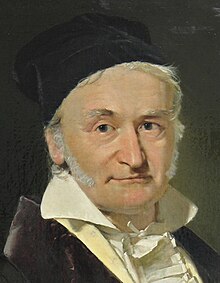ODEs vs PDEs
I began studying ODEs by solving equations straight off the bat. I started with the simplest one I could think of,$$\frac{dy}{dx}=0,$$and moved onto progressively more difficult ones, like$$\frac{dy}{dx}=x^2.$$While learning, I developed a 'toolkit' of techniques that could solve equations that met very specific criteria. For example, one 'tool' claimed that an equation of the form$$\frac{dy}{dx}+P(x)y=f(x)$$had a solution$$y=\frac{\int e^{\int P(x)\,dx}f(x)\,dx}{e^{\int P(x)\,dx}}.$$I picked up several other tools that could tackle every kind of ODE that you could imagine. However, there were never enough; the set of
linear ODEs alone,$$\sum_{k=0}^{n}a_k(x)\frac{d^ky}{dx^k}=f(x),$$has an infinitesimal subset of equations that can be solved by analytic methods, and another one that requires a numerical approach instead. Moreover, when it comes to nonlinear ODEs, what lies before our eyes, more often than not, is a vast ocean full of esoteric sea creatures totally disjoint from all of our equation-solving findings, so to speak.
I thought that I could try an
a posteriori approach toward PDEs, and although it could work, it would definitely never provide the necessary theoretical groundwork required to reach higher levels of understanding. To circumvent this issue, I decided to opt for a physically-based introduction to them, as mathematical legends such as Laplace found lots of inspiration from the observational works of Newton and similar applied scientists.
Now, without further due, let me present the
heat equation to you!
The Heat Equation
The first PDE that we are going to study is called the heat equation. Let us derive it by considering a one-dimensional model rod of length $L$ with a perfectly insulated lateral surface. Visually:

The heat equation is governed by the word equation:$$\begin{matrix}\text{rate of change}\\\text{of heat energy}\\\text{in time}\end{matrix}=\begin{matrix}\text{heat energy flowing}\\\text{across boundaries}\\\text{per unit time}\end{matrix}+\begin{matrix}\text{heat energy generated}\\\text{inside per unit time.}\end{matrix}$$Therefore, let us define the following functions:$$\begin{align}e(x,t)&:=\text{thermal energy density}\\\varphi(x,t)&:=\begin{matrix}\text{heat flux (the amount of thermal energy per unit}\\\text{time flowing to the right per unit surface area)}\end{matrix}\\Q(x,t)&:=\text{heat energy per unit volume generated per unit time}\\\end{align}$$Our word equation then becomes$$\frac{\partial}{\partial t}\left[e(x,t)A\Delta x\right]\approx\varphi(x,t)A-\varphi(x+\Delta x,t)A+Q(x,t)A\Delta x$$Notice that this is only an approximation because we are taking a very small slice of the rod of size $\Delta x$ (the functions are deemed almost constant at this size). We claim, however, that it becomes exact as we let $\Delta x\to0$:$$\frac{\partial e}{\partial t}=\lim_{\Delta x\to0}\frac{\varphi(x,t)-\varphi(x+\Delta x,t)}{\Delta x}+Q(x,t)=-\frac{\partial\varphi}{\partial x}+Q(x,t)$$We usually talk about the temperature of an object rather than its thermal energy density. Therefore, let us introduce the functions$$\begin{align}c(x)&:=\text{specific heat}\\\rho(x)&:=\text{mass density}\\u(x,t)&:=\text{temperature}\end{align}$$and the equality$$e(x,t)=c(x)\rho(x)u(x,t)$$Substituting yields a new equation$$c(x)\rho(x)\frac{\partial u}{\partial t}=-\frac{\partial\varphi}{\partial x}+Q(x,t)$$This is the heat equation. However, we cannot solve it since it involves two unknown functions $u$ and $\varphi$. For this reason, we introduce
Fourier's law of heat conduction:$$\varphi(x,t)=-K_0\frac{\partial u}{\partial x}$$Substituting it into the heat equation yields$$c(x)\rho(x)\frac{\partial u}{\partial t}=K_0\frac{\partial^2u}{\partial x^2}+Q(x,t)$$For the sake of simplicity, let us treat $c$, $\rho$, and $K_0$ as constants. Hence,$$\frac{\partial u}{\partial t}=k\frac{\partial^2u}{\partial x^2}+\frac{Q(x,t)}{c\rho}$$where $k=K_0/c\rho$. Letting $Q=0$ yields the canonical heat equation; this is what we are mostly going to work with from here on.
This is how the heat equation is derived. The equalities we presented are physical in nature, but since this is a mathematical blog, we are just going to accept them as true. In the next entry, we are going to go over the
method of separation of variables to solve the heat equation with initial and boundary conditions$$\begin{align}\text{IC}&:u(x,0)=f(x)\\\text{BCs}&:\left\{\begin{matrix}u(0,t)&=0\\u(L,t)&=0\end{matrix}\right.\end{align}$$I will talk more about initial and boundary conditions in the next entry as well. Until then, have fun!






